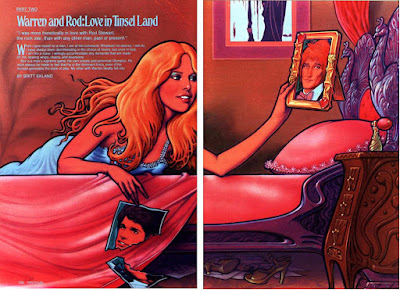Book Review: 'Brak the Barbarian' by John Jakes
4 / 5 StarsThis slim (160 pp.) little volume of 'Brak' tales was issued by Tandem Books (UK) in 1976. The striking cover art is by Bob Fowke. Some of the stories in this compilation first saw print in the mid-1960s in Fantastic Stories, while others were composed by Jakes expressly for the initial 1968 paperback printing.
'Brak the Barbarian' has been reprinted in various paperback editions through the years, including a Pocket Books edition in 1977.
In the Tandem Books edition, we get 'The Unspeakable Shrine', 'Flame-Face', 'The Courts of the Conjurer', 'Ghosts of Stone', and 'The Barge of Souls'.
As I have stated in my reviews of other entries in the Brak franchise, these stories are as good as the Conan pastiches of Lin Carter, with his 'Thongor' stories. In the tales collected in 'Brak the Barbarian' the horror element - and the gore and violence - are considerably more overt, as are the intentions of the beauteous women who try to tempt our hero from his quest to arrive in the shining southern city of Kurdisan.
Here's an example of the sensibility Jakes brings to the chapter / story 'Flame Face':
Somewhere along the endless corridor on to which the rock pens opened, a prisoner shrieked in the grip of dementia. Guard boots slammed. A bolt was shot back. An argument ensued. The maniacal captive could not be silenced.
All at once, his burbling came sharply to a stop. Coarse laughter and the slower footfalls of the guards indicated that a dagger had served where blows and oaths would not. On more than one occasion the big barbarian had seen a troublemaker thus dispatched in the mines, his corpse flung into the glaring furnaces.
In the story 'The Barge of Souls', Jakes provides a grim and evocative description of the aftermath of a titanic battle:
At highest noon, the sun was but a pale silver-white disc through the murk overhead. Everywhere lay bodies, whole or dismembered, stinking blood that mingled with the richer, redder stuff bled out of horses slaughtered by the hundreds. Brak saw grisly remains of war engines, and all the paraphernalia of a gigantic combat.
The ground beneath the pony's hooves was loamy. This silt partially covered many of the bodies.....
Jakes's post-pulp approach to the Sword and Sorcery genre holds up well some sixty years after these stories first saw print. If you're a fan of the genre, then having some Brak titles in your personal library is recommended.


























































.jpg)


















